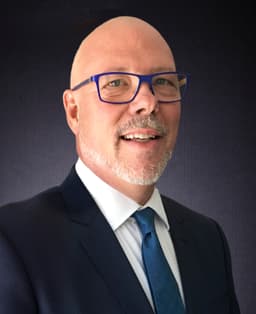Doctors’ Blind Spot? The Patient

Right before our eyes there’s a dark hole in what we see. Not only don’t we see some of what’s right in front of our face, but we don’t even notice the gap. Our illusion of a seamless visual world is so strong that scientists used to think that the spot where our optic nerve enters the back of each eye gave us our sharpest, clearest vision – not a place where we are utterly blind. Now we call this spot of profound blindness the punctum cecum (A fancy Latin phrase for blind spot. Impress your friends).
Why don’t we notice it? Perhaps because the blind spots in our two eyes are in slightly different places, so our brain fills in the gap? This is partially true. But try this: quickly close one eye and look somewhere new. You won’t see a gaping hole, even for an instant. What we see instead is something our minds make up, based on whatever data we have, ignoring the rest. We color-match and pattern-match the background with astonishing speed. If we’re looking at a red polka dot pattern, there are still red dots wherever we would expect them to be. Try it. (Instructions). Map the size of your own blind spot.
The way our brains handle blind spots works brilliantly, most of the time. We’re fooled, though, if what’s near the center of our vision doesn’t match the color or pattern we would expect — which brings me to doctors and patients.
As physicians, we think we see patients very clearly. We’re looking and listening and paying attention. But something else is also happening. With astonishing speed, our medically-trained brains begin to recognize and fill in patterns from a few bits of information. We often make a diagnosis within seconds of walking into a room, unconsciously eliminating data gaps from what we expect to see. Most of the time this works very well (I couldn’t get through the day without it!). But sometimes, when what’s happening doesn’t match the most common patterns – and especially in the long tail of rare diseases – we draw startlingly wrong conclusions and miss what look like in retrospect to be obvious diagnoses.
I suggest two things:
Physicians – In every encounter, take at least a brief sideways look at the situation; notice something unique about this patient that doesn’t fit a stereotype, even if it’s something very small and seemingly irrelevant. Practice direct observation where the patient is the real center of vision, not the center of our pattern recognition. And always ask yourself, at least briefly, “What might I be missing? What if I’m wrong? In other words, map the size of your blind spot.
Patients – If your situation doesn’t seem to match with what the doctor is saying, try to get out of the blind spot. This might take some creativity or might be as easy as saying, “I understand that what you’re saying is usually true, but here’s why my situation feels different. Don’t relent until you know someone is really seeing and hearing you (and especially your child).
An Even Bigger Blind Spot
I’m a fan of evidence-based medicine, which means making choices for solid scientific reasons, when possible, rather than just because things have always been done a certain way or because someone said something works. The gold standard of evidence-based medicine is the prospective, randomized, double-blind, placebo-controlled study. These are very powerful. People are randomly assigned to get either a real treatment or a sham treatment, without knowing what they’re getting. Nor does the person assessing the patient know. This way we can remove bias and belief from the equation and only just measure, for instance, the biochemical effect of a drug.
But by definition the patient (and for that matter, those involved in their care) are in the dark about what’s going on. Our best evidence can’t measure the effect of what happens when patients do know what’s happening in their bodies – when patients are engaged, empowered, and equipped. When they’re e-patients. This may be the most important aspect of our health, and it square in the middle of our blind spot. And thus it isn’t prominent in our medical journals or in our medical system.
I suggest two things:
Join the Society of Participatory Medicine. We’re a group of people and organizations dedicated to transforming the culture of healthcare to something that is truly participatory and collaborative – with all players engaged and treated with the respect they deserve. The nominal cost helps to support this movement, but don’t let money get in the way of joining. Scholarships are eagerly given.
Check out – and submit articles, videos etc. to the Journal of Participatory Medicine. This groundbreaking medical journal has both a patient and a doctor as co-editors in chief. We’re exploring what happens when people and/or their providers participate in health and we’re exploring how to go about participating for all involved. And how to measure it all. This is a place both for individual stories and for building a serious evidence-base for the core matters of our health.
It’s our health, and our kids’Let’s make ourselves seen and heard.


